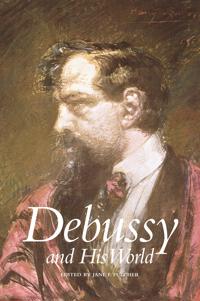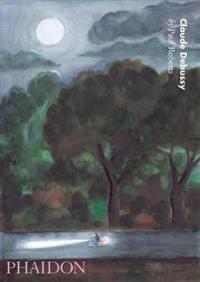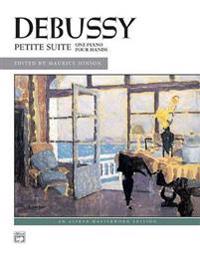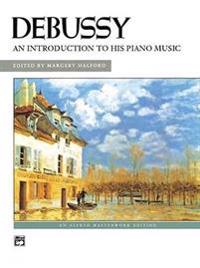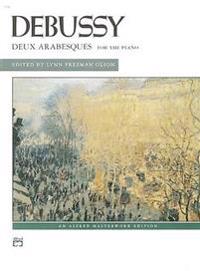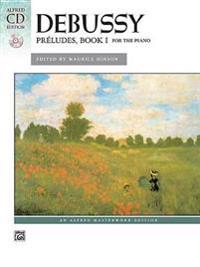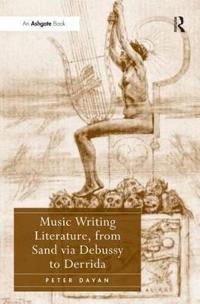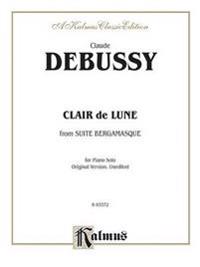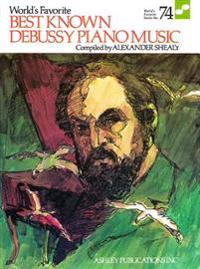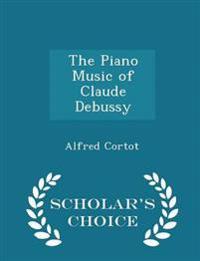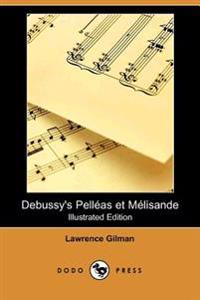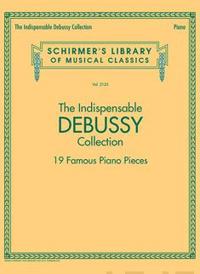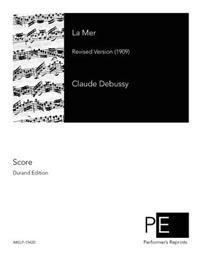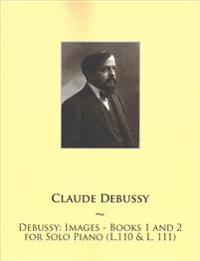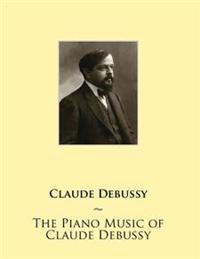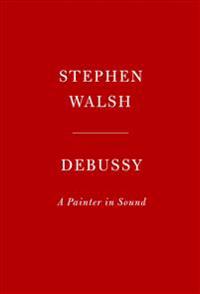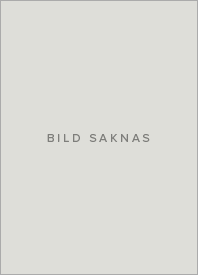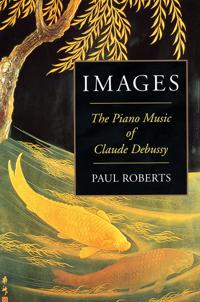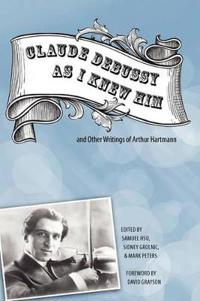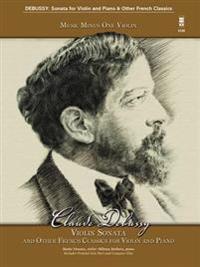Debussy and His World (Häftad)
ISBN: 9780691090429 - UTGIVEN: 200108Claude Debussy's Paris was factionalized, politicized, and litigious. It was against this background of ferment and change--which characterized French society and music from the Franco-Prussian War to World War I--that Debussy re-thought music. This book captures the complexity of the composer's res[...]
Claude Debussy (Häftad)
avPaul Roberts
ISBN: 9780714835129 - UTGIVEN: 2007-01Claude Debussy (1862-1918) was a great harmonic innovator and one of the most original musical voices of the twentieth century. He created fresh, new tonal perspectives without abandoning tonality itself. With a revolutionary sense of instrumental colour and a fleeting, atmospheric sound world, he i[...]
Debussy -- Petite Suite (Okänt format)
ISBN: 9780739016084 - UTGIVEN: 1986-07Consisting of four movements, this work for one piano/four hands shows the influence of the French lyric opera composers Gounod and Massenet. Debussy composed this work before he had fully developed his Impressionistic style, and with its clarity of patterns and conciseness of form, Debussy pays a k[...]
Debussy -- An Introduction to His Piano Music (Okänt format)
ISBN: 9780739018453 - UTGIVEN: 1984-05This collection of Debussy's popular intermediate pieces includes "Clair de lune," "Reverie," "La petit negre," the complete "Children's Corner Suite" and other works. The introductory pages discuss symbolist poetry, French Impressionist painters and Debussy's musical style. A variety of photographs[...]
Debussy: An Introduction to His Piano Music [With CD] (Okänt format)
ISBN: 9780739038765 - UTGIVEN: 2006-02This collection of Debussy's popular intermediate pieces includes "Clair de lune," "Reverie," "La petit negre," the complete "Children's Corner Suite" and other works. The introductory pages discuss symbolist poetry, French Impressionist painters and Debussy's musical style. A variety of photographs[...]
Debussy: Preludes, Book I for the Piano [With CD (Audio)] (Okänt format)
ISBN: 9780739077566 - UTGIVEN: 2011-03Music Writing Literature, from Sand Via Debussy to Derrida
ISBN: 9780754651932 - UTGIVEN: 2006-10Why does poetry appeal to music? Can music be said to communicate, as language does? What, between music and poetry, is it possible to translate? These fundamental questions have remained obstinately difficult, despite the recent burgeoning of word and music studies. Peter Dayan contends that the re[...]
Clair de Lune (from Suite Bergamasque): For Piano Solo (Original Version, Unedited)
avClaude Debussy
ISBN: 9780769284866 - UTGIVEN: 198503The original, unedited, unsimplified version of one of Debussy's most popular piano works. This ethereal, flowing section of "Suite Bergamasque" is diatonic and displays a conventional harmonic vocabulary in D-flat major. The title, "Clair de lune," suggests a relationship to Paul Verlaine's eponymo[...]
Best Known Debussy Piano Music: World's Favorite Series #74 (häftad)
ISBN: 9780825650642 - UTGIVEN: 1996-09(World's Favorite (Ashley)). This volume includes most of the world famous piano compositions of the immortal Claude Debussy. Each selection is complete and in its original form. Pieces include 'Clair de Lune, ' 'Reverie, ' 'The Afternoon of a Fun, ' as well as Debussy's brilliant suites for the pia[...]
Claude Debussy
ISBN: 9780857756022 - UTGIVEN: 2013-12A passion for Debussy? With fingerings clearly marked and designed for easy reading, these books are the ideal resource for any piano or keyboard player. Suited to every ability and helpfully grouped by level of difficulty each book contains pieces to delight lovers of the classical masterpieces. Cl[...]
The Piano Music of Claude Debussy - Scholar's Choice Edition (häftad)
ISBN: 9781294977650 - UTGIVEN: 2015-02Debussy Suite Bergamasque
ISBN: 9781480369054 - UTGIVEN: 2015-02(Schirmer Performance Editions). A new edition, with extensive historical and pedagogical commentary. Four movements: Prelude, Menuet, Claire de lune and Passepied. Edited and recorded by Christopher Harding.[...]
The Indispensable Debussy Collection - 19 Favorite Piano Pieces
ISBN: 9781495071591 - UTGIVEN: 2016-12The Indispensable Debussy Collection contains 19 of Debussy's most famous pieces in arrangements for solo Piano, including: Children's Corner, Deux Arabesques, Clair de lune, Rêverie, selections from Préludes, Livres I and II and more.[...]
Debussy: Images - Books 1 and 2 for Solo Piano (L.110 & L. 111) (häftad)
ISBN: 9781508669036 - UTGIVEN: 2015-03Debussy: A Painter in Sound
ISBN: 9781524731922 - UTGIVEN: 2018-10A beautifully written and original biography of one of the greatest and most popular of modern composers--which also deeply investigates his much-loved music. Claude Debussy (1862-1918) was that rare creature, a composer who reinvented the language of music without alienating the majority of music l[...]
Debussy - Very Best for Piano (Okänt format)
ISBN: 9781569220665 - UTGIVEN: 2000-02(Creative Concepts Publishing). A fine collection of 27 Debussy pieces arranged for piano solo, including: Ballade * Clair de Lune * Danse * Deux Arabesques, Nos. 1 and 2 * Hommage a Rameau * Jardins Sous la Pluie * The Maid With the Flaxen Hair * Mazurka * Reflets Dans l'eau * Sarabande from "Pour [...]
Images: The Piano Music of Claude Debussy (Häftad)
avPaul Roberts
ISBN: 9781574670684 - UTGIVEN: 200303"Pianist Paul Roberts probes the sources of Debussy's inspiration in the artistic and literary ferment of Paris at the turn of the century. This is a first extensive study of Debussy's piano music in many years, richly illustrated with works of art that fired the composer's imagination."--BOOK JACKE[...]
"Claude Debussy As I Knew Him" and Other Writings of Arthur Hartmann (häftad)
ISBN: 9781580463645 - UTGIVEN: 2010-09Arthur Hartmann (1881-1956), a celebrated violinist who performed over a thousand recitals throughout Europe and the United States, met Claude Debussy in 1908, after he had transcribed 'Il pleure dans mon coeur' for violin and piano. Their relationship developed into friendship, and in February 1914[...]
Debussy - Violin Sonata and Other French Classics for Violin and Piano: Music Minus One Violin
ISBN: 9781596157729 - UTGIVEN: 2009-01(Music Minus One). Here is Claude Debussy's marvelous sonata for violin and piano, as well as two other great French masterworks by Faure and Camille Saint-Saens. Listen to virtuosi Hossen and Milena Mollova play a reference version of this great sonata, then you step in with Ms. Mollova as your par[...]

